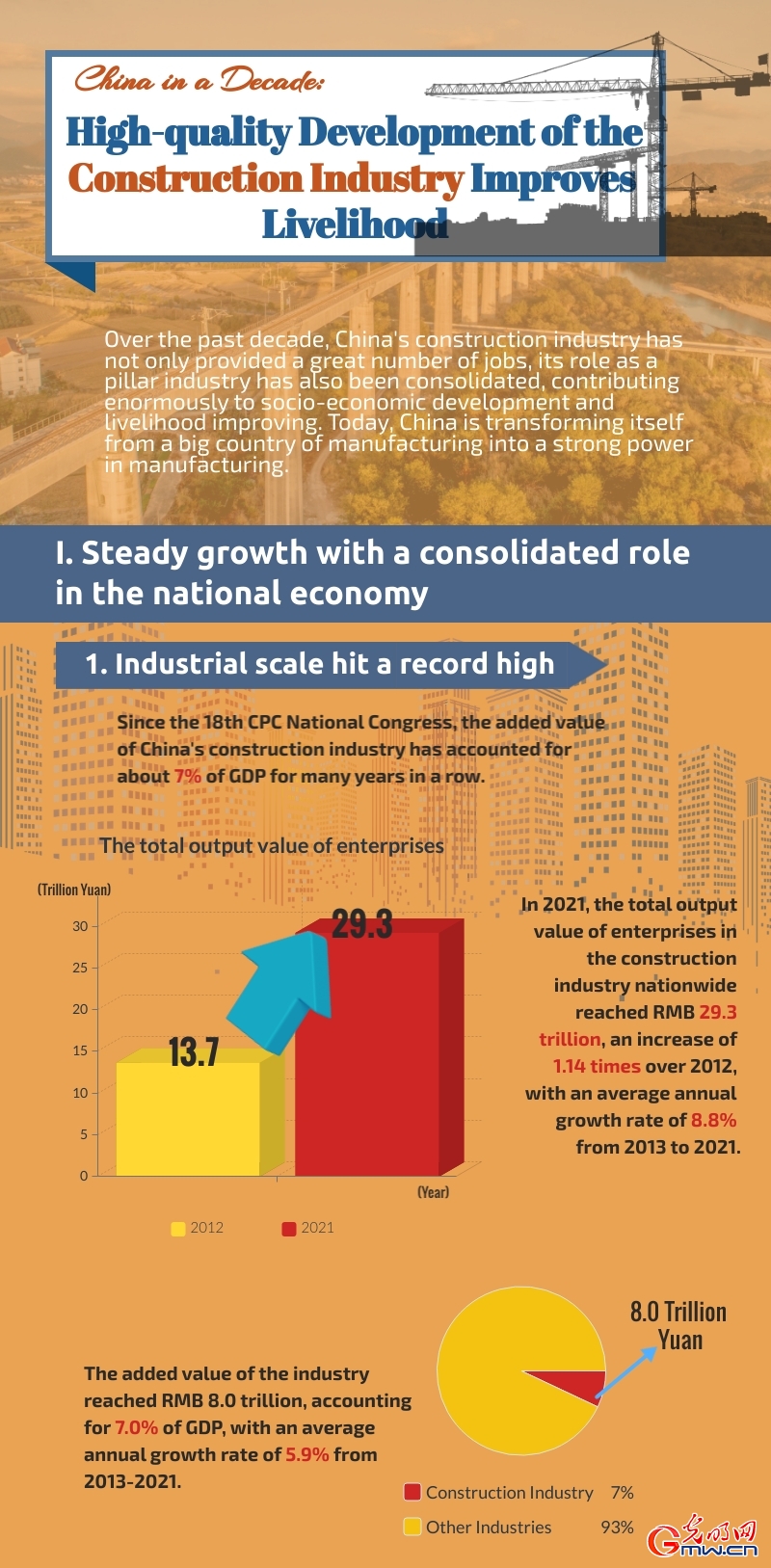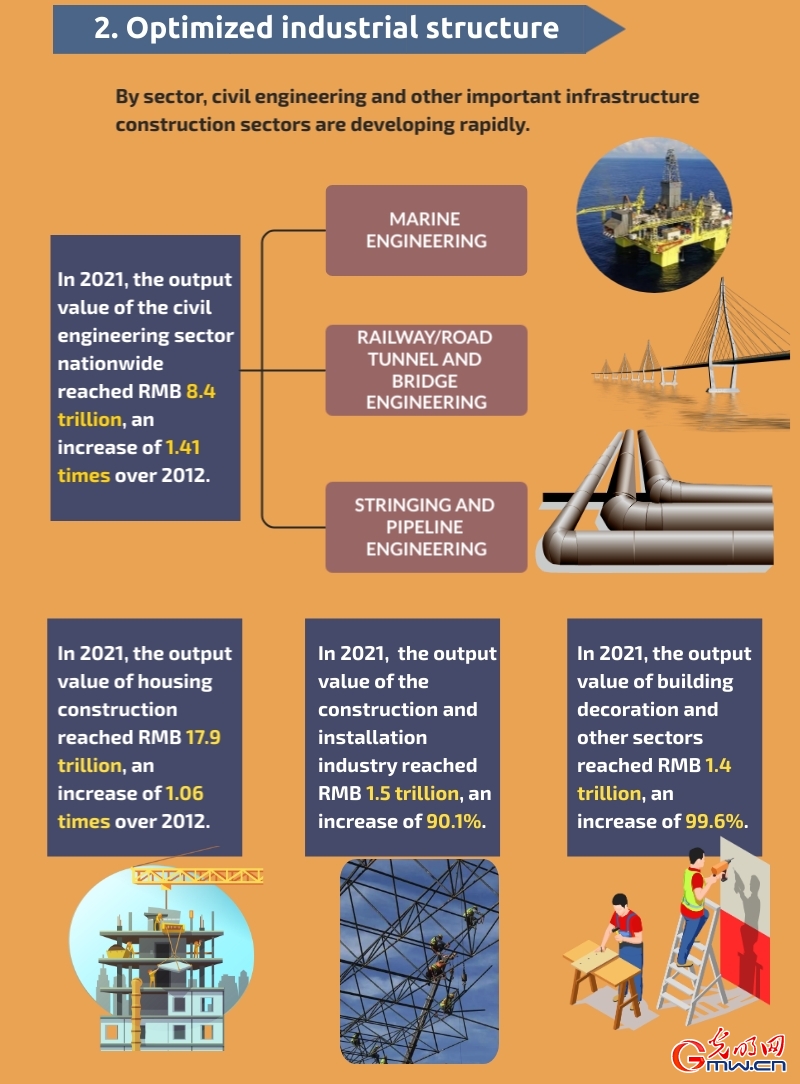

By Zhang Zhou
Since the 18th CPC National Congress, following the concept of innovation, coordination, green development, openness and sharing, China has expanded the scale of its construction industry and optimized its structure and regional layout. Over the past decade, the industry has not only provided a great number of jobs, its role as a pillar industry has also been consolidated, contributing enormously to socio-economic development and livelihood improving. Today, China is transforming itself from a big country of manufacturing into a strong power in manufacturing.

I. Steady growth with a consolidated role in the national economy
1. Industrial scale hit a record high
Since the 18th CPC National Congress, China’s construction industry has actively responded to the challenges and risks from both at home and abroad, withstood the impact of Covid-19 and achieved steady and healthy development. The added value of the industry has accounted for about 7% of GDP for many years in a row, and its role as the pillar of the national economy has remained stable.
In 2021, the total output value of enterprises in the construction industry nationwide reached RMB 29.3 trillion, an increase of 1.14 times over 2012, with an average annual growth rate of 8.8% from 2013 to 2021.
The added value of the industry reached RMB 8.0 trillion, accounting for 7.0% of GDP, with an average annual growth rate of 5.9% from 2013-2021.

2. Optimized industrial structure
By sector, civil engineering and other important infrastructure construction sectors are developing rapidly.
In 2021, the output value of the civil engineering sector nationwide reached RMB 8.4 trillion, an increase of 1.41 times over 2012, of which the output value of marine engineering, railway/road tunnel and bridge engineering, and stringing and pipeline engineering had doubled, growing by 4.09 times, 1.59 times and 1.21 times respectively over 2012, contributing significantly to China’s infrastructure construction.
In 2021, the output value of housing construction reached RMB 17.9 trillion, an increase of 1.06 times over 2012; the output value of the construction and installation industry reached RMB 1.5 trillion, an increase of 90.1%; and the output value of building decoration and other sectors reached RMB 1.4 trillion, an increase of 99.6%.

3. Continued improvement in regional layout
In 2021, the output value of the construction industry in the eastern, central, and western regions all doubled that of 2012, with the eastern region growing by 1.03 times, the central region by 1.67 times and the western region by 1.60 times. The total output value of central and western regions accounted for 24.7% and 21.6% of national total, respectively, 4.9 and 3.9 percentage points high than in 2012. The central and western regions show an obvious late-mover advantage, and development between regions is becoming more balanced.
4. Significant contribution to the job market
In 2021, the number of workers employed by construction enterprises reached 81.8 million, ranking second in the national economy among all industries. Among them, the average number of workers employed by construction enterprises with EPC and professional contracting qualifications reached 61.94 million, an increase of 33.8% over 2012 with an average annual growth of 3.3% from 2013 to 2021.
The construction industry has made an important contribution to absorbing surplus rural labors and easing the employment pressure of the society. According to the monitoring report of the National Bureau of Statistics, the total number of migrant workers at the end of 2021 reached 292.51 million, of which 19.0% were employed in the construction industry.
点击右上角![]() 微信好友
微信好友
 朋友圈
朋友圈

请使用浏览器分享功能进行分享
